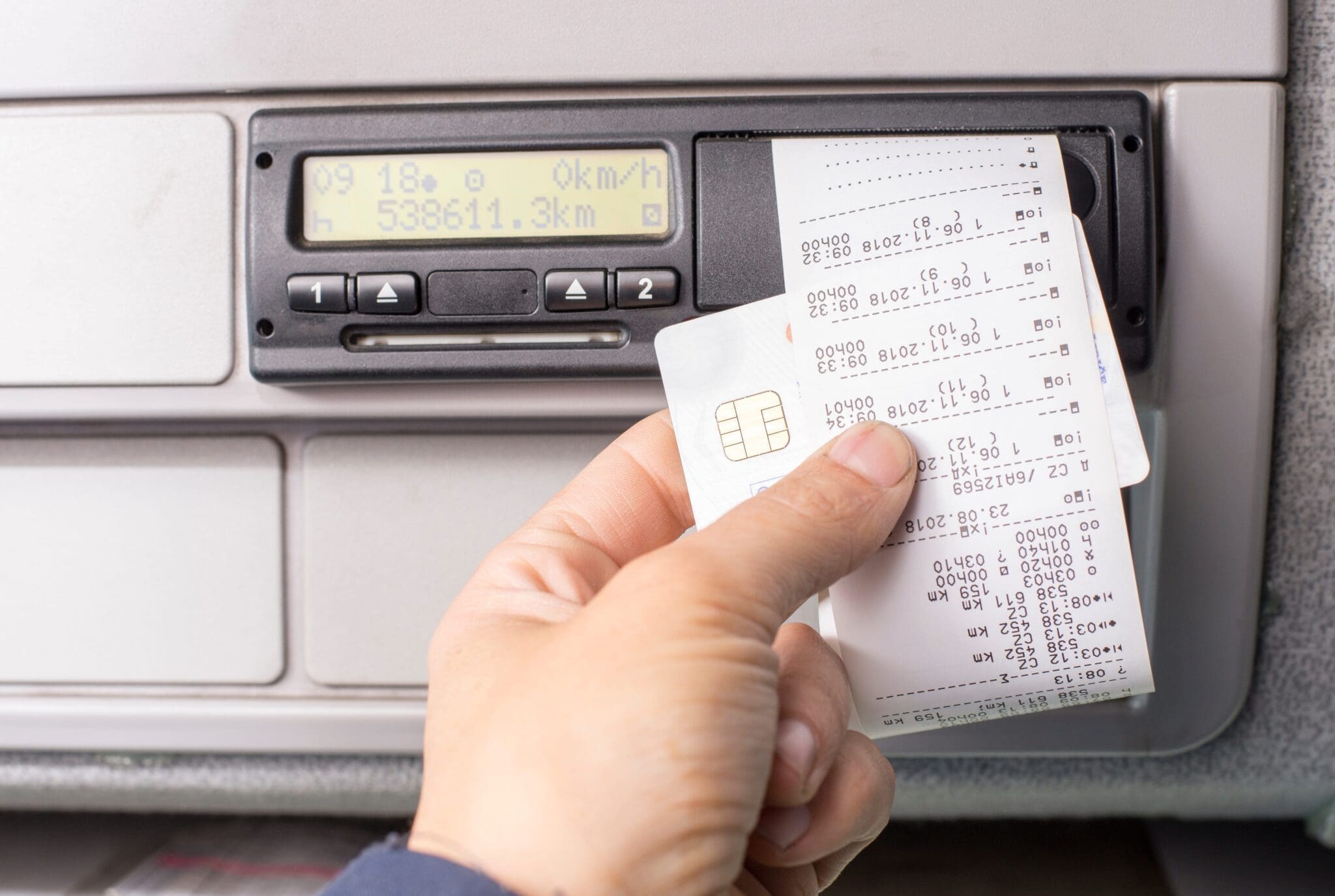A tachograph forms the basis of drive time regulations in the commercial driving industry. It provides a basis for how much drivers can be expected to work, ensuring both safety and worker protection.
What is a tachograph?
A tachograph is a device that automatically records a vehicle’s speed and distance as it travels. They also record the amount of time spent driving and produce the information on a tacho card. They are used to establish compliance with HGV tacho laws, which set out how much time a driver can spend driving in various timeframes.
All commercial vehicles registered on or after 1 May 2006 must be fitted with a digital tachograph.

What are the UK tachograph rules?
For commercial vehicle drivers, the maximum amount of daily drive time within a 24-hour period must not exceed 9 hours daily but can be extended to 10 hours twice a week. Over two weeks, the maximum drive time is 90 hours. Over one week, the maximum drive time is 56 hours.
There are also rules on breaks. After every four and a half hours of driving time, the driver is required to take at least 45 minutes of breaks, which can be one continuous 45-minute session, or split into two sessions of 15 minutes and half an hour (breaks must be taken in this order if split).
There must also be an unbroken period of 45 hours of rest each week. These weekly rest periods are reduced to no less than 24 hours every other week. After working in six consecutive 24-hour periods, a heavy goods vehicle (HGV) driver is required to take their weekly rest period.
If you have any spare tacho driving hours in your week, MDS have a range of commercial driving jobs available. You can explore our available jobs today.

